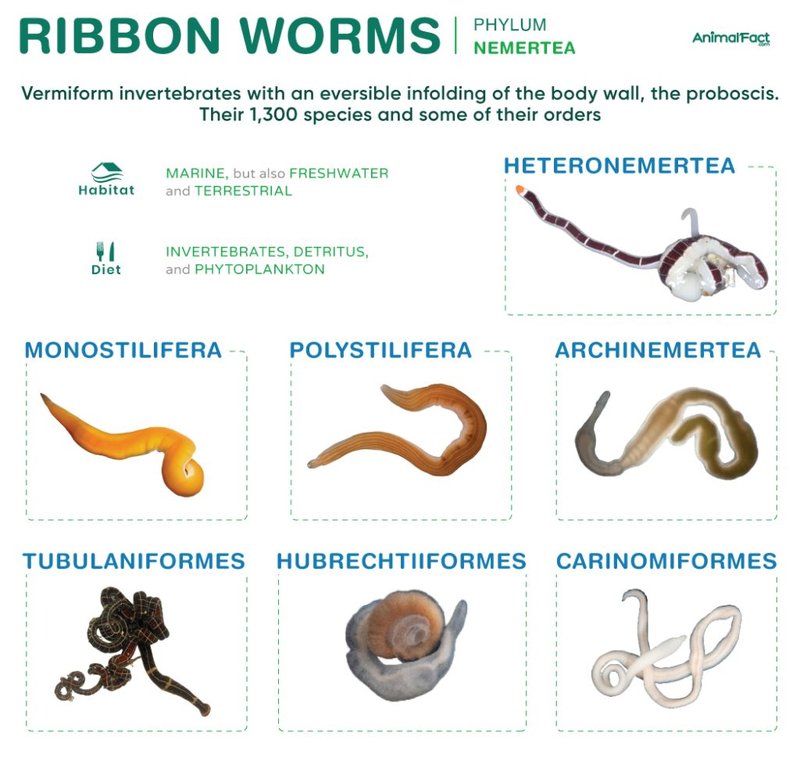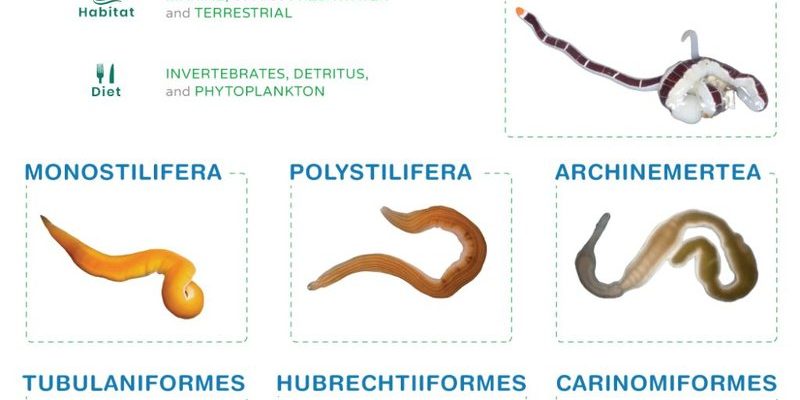
So, what’s the real difference between these two worm groups? Ribbon worms are flashy and a bit more exotic, often found in marine environments, while annelids are the classic earthworms we often see in our gardens. Let me take you on this journey through the worm world, helping you understand what sets them apart. Trust me, it’s going to be enlightening!
What Are Ribbon Worms?
Ribbon worms, or **Nemertea**, are often overlooked but are truly fascinating creatures. These marine worms can vary widely in size, ranging from a few millimeters to over 30 meters long. That’s longer than some species of whales! You might picture them as long, colorful ribbons floating through the water, hence their name. They have a unique body structure that allows them to move swiftly through their environment, often using a form of muscle contraction similar to what we see in snakes.
One of the standout features of ribbon worms is their **proboscis**, a long, tubular structure they can extend to capture prey. When you compare this to annelids, which usually ingest food through their mouths, it’s like seeing a magician pull a rabbit out of a hat. Ribbon worms can deliver venom to paralyze their prey, making them effective hunters in their watery habitats.
In terms of habitat, you’ll typically find ribbon worms along coastlines, under rocks, or buried in the sand. They thrive in marine ecosystems, giving them a unique role in the ocean’s food chain. This marine setting is a big part of what makes them so different from their annelid cousins.
What Are Annelid Worms?
Now let’s chat about annelid worms, a group that includes the classic **earthworms** and other familiar types like leeches. Annelids are segmented worms, meaning their bodies are made up of distinct sections, or segments. This segmentation allows for greater flexibility and control over their movements. Think of it like a caterpillar—it can move in a wave-like motion, which helps it navigate through soil or leaf litter.
Annelids play a crucial role in our ecosystems, especially in soil health. They help break down organic matter, aerate the soil, and recycle nutrients. If you’ve ever dug in your garden and seen a wriggling earthworm, you know how vital they are for plant growth. They enhance soil fertility, making them the unsung heroes of agriculture.
You might be surprised to learn that annelids can also be found in aquatic environments, such as rivers and ponds, alongside their terrestrial habitats. However, they lack the dramatic hunting methods of ribbon worms, typically feeding by ingesting soil and organic matter instead.
Physical Differences Between Ribbon Worms and Annelid Worms
When you look closely at ribbon worms and annelids, their differences become more apparent.
- Body Structure: Ribbon worms have a smooth, elongated body without segments, while annelids are distinctly segmented.
- Surface Texture: Many ribbon worms have a soft, flexible body, often with colorful patterns, whereas annelids typically have a more muted coloration with visible rings along their bodies.
- Movement: Ribbon worms use a combination of muscle contractions and their proboscis for locomotion, while annelids rely on their segments for coordinated movement through contracting and expanding their body.
Understanding these physical traits helps emphasize their adaptations to their respective environments. Ribbon worms are built for a predatory lifestyle in the ocean, while annelids are designed for life in soil or freshwater, turning nutrients into fertile ground for plants.
Feeding Habits: Hunters vs. Diggers
It’s not just their physical traits that set these worms apart, but also how they eat. Ribbon worms are active predators, often consuming smaller fish, crustaceans, or other invertebrates. Their proboscis is not just for show; it’s a key tool for hunting. They can extend it rapidly to snatch up prey, injecting venom to disable it. Picture this: it’s like a sprinter launching off the starting line, quick and precise.
On the flip side, annelids are mostly detritivores, meaning they feed on decomposing organic matter. They consume soil and absorb nutrients as they move through it. Have you ever noticed how earthworms leave behind richer soil? That’s because they break down organic matter efficiently as they tunnel, making nutrients more accessible for plants. Think of them as nature’s recyclers, turning waste into valuable resources.
This difference in feeding habits not only highlights the unique roles they play in their ecosystems but also shows how each has adapted to their environment. Ribbon worms rule the ocean, while annelids enrich our gardens.
Reproduction and Lifespan
When it comes to reproduction, ribbon worms and annelids take very different approaches. Ribbon worms can reproduce both sexually and asexually. Some can even regenerate lost segments, which means if they lose a part of their body, they can grow it back! Imagine if you could replace a missing finger; that’s essentially what they can do. This regenerative ability is impressive, adding to their mystery.
Annelids also have a fascinating reproduction strategy. Many earthworms are hermaphrodites, meaning they have both male and female reproductive parts. They exchange sperm with others during mating, contributing to genetic diversity. After mating, they produce cocoons that house the fertilized eggs, which eventually hatch into baby worms. This method helps ensure their populations thrive, especially in environments where conditions can change.
In terms of lifespan, annelids can vary, but many live for several years, while ribbon worms generally have shorter lifespans, often only a few months. It’s interesting to see how their lifestyles reflect their life cycles—quick and agile versus steady and enduring.
Ecological Importance
Both ribbon worms and annelids hold significant roles in their ecosystems, but their contributions look a bit different. Ribbon worms are key predators in marine environments, helping control populations of smaller organisms. This predatory balance is essential for maintaining healthy ocean ecosystems. Without them, certain species could overpopulate, leading to imbalances that can affect the entire marine food chain.
Annelids, on the other hand, are vital for soil health. They contribute to nutrient cycling, which is crucial for plant growth and, by extension, the food we eat. Their burrowing actions aerate the soil, allowing water and nutrients to reach plant roots more effectively. Think of them as tiny underground gardeners, tirelessly working to create fertile ground.
It’s fascinating how both types of worms, though so different, are interconnected in the web of life. Each one helps maintain the balance in their unique environments, reminding us of the importance of biodiversity.
So, as we wrap up our comparison of ribbon worms and annelids, it’s clear that these two groups, while both fascinating in their own right, are like two sides of a coin. Ribbon worms are the swift, colorful hunters of the ocean, while annelids are the hardworking earth dwellers that bring life to our soil.
Understanding these differences enriches our appreciation for the diverse forms of life on our planet. Whether you spot a ribbon worm gliding through the water or an earthworm wriggling in the dirt, remember that each plays an essential role in their respective ecosystems. So next time you think of worms, you’ll know there’s a whole world of variety beyond the garden variety!

